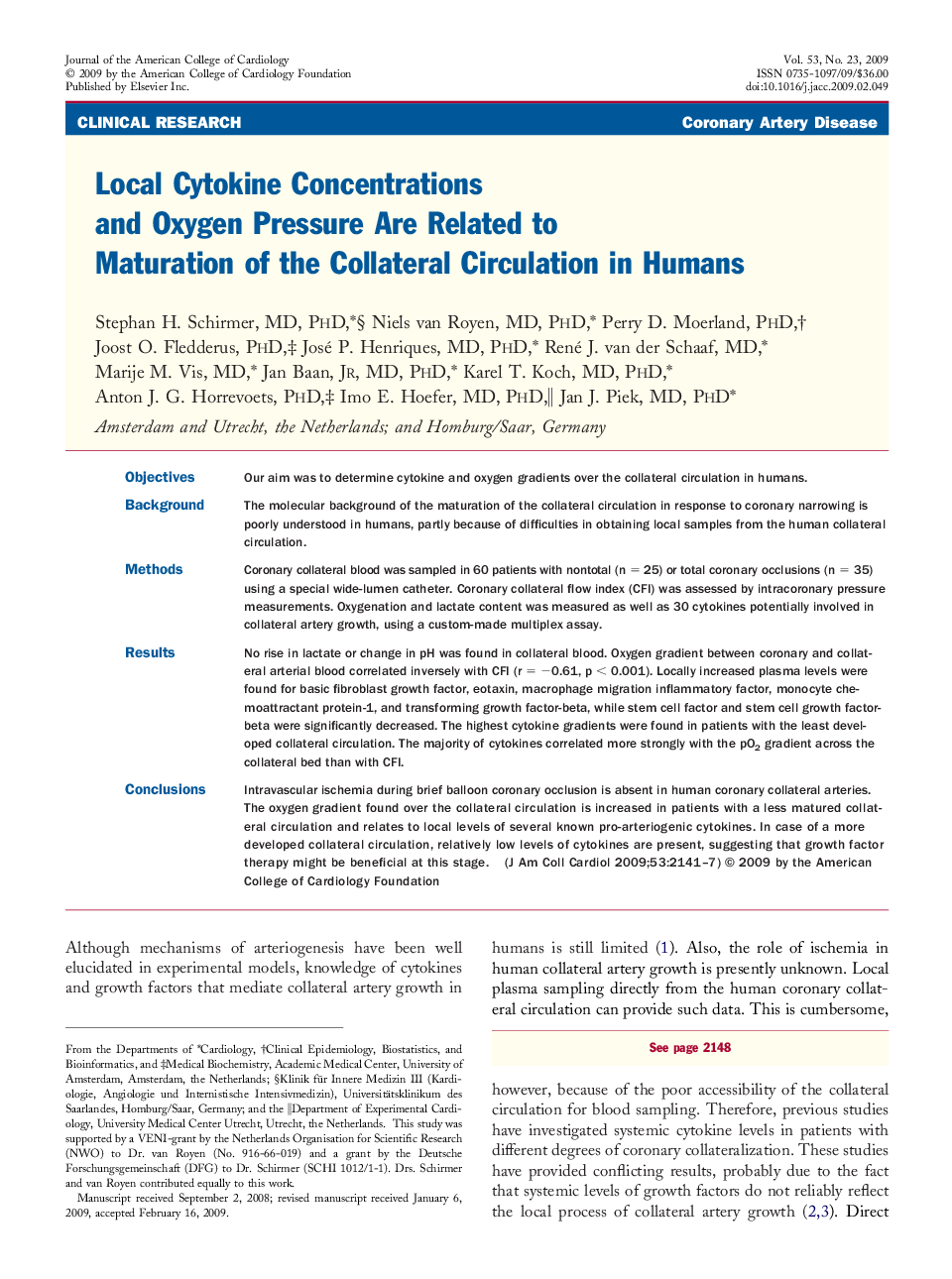| Article ID | Journal | Published Year | Pages | File Type |
|---|---|---|---|---|
| 2951290 | Journal of the American College of Cardiology | 2009 | 7 Pages |
ObjectivesOur aim was to determine cytokine and oxygen gradients over the collateral circulation in humans.BackgroundThe molecular background of the maturation of the collateral circulation in response to coronary narrowing is poorly understood in humans, partly because of difficulties in obtaining local samples from the human collateral circulation.MethodsCoronary collateral blood was sampled in 60 patients with nontotal (n = 25) or total coronary occlusions (n = 35) using a special wide-lumen catheter. Coronary collateral flow index (CFI) was assessed by intracoronary pressure measurements. Oxygenation and lactate content was measured as well as 30 cytokines potentially involved in collateral artery growth, using a custom-made multiplex assay.ResultsNo rise in lactate or change in pH was found in collateral blood. Oxygen gradient between coronary and collateral arterial blood correlated inversely with CFI (r = −0.61, p < 0.001). Locally increased plasma levels were found for basic fibroblast growth factor, eotaxin, macrophage migration inflammatory factor, monocyte chemoattractant protein-1, and transforming growth factor-beta, while stem cell factor and stem cell growth factor-beta were significantly decreased. The highest cytokine gradients were found in patients with the least developed collateral circulation. The majority of cytokines correlated more strongly with the pO2gradient across the collateral bed than with CFI.ConclusionsIntravascular ischemia during brief balloon coronary occlusion is absent in human coronary collateral arteries. The oxygen gradient found over the collateral circulation is increased in patients with a less matured collateral circulation and relates to local levels of several known pro-arteriogenic cytokines. In case of a more developed collateral circulation, relatively low levels of cytokines are present, suggesting that growth factor therapy might be beneficial at this stage.
